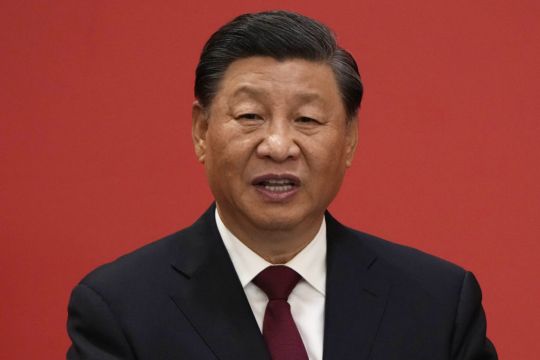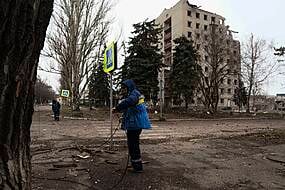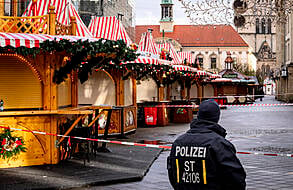Chinese president Xi Jinping has secured a third term as general secretary of the ruling Communist Party, paving the way for him to remain in power for at least five more years — and possibly longer.
Here are the key events in Mr Xi’s life:
June 15 1953: Xi Jinping was born in Beijing, the son of Xi Zhongxun, a senior Communist Party official and former guerrilla commander in the civil war that brought the communists to power in 1949.
1969-75: At the age of 15, he is among many educated urban youths sent to live and work in poor rural villages during the Cultural Revolution, a period of social upheaval launched by leader Mao Zedong.

1975-79: He returns to Beijing to study chemical engineering at prestigious Tsinghua University.
1979-82: He joins the military as an aide in the Central Military Commission and Defence Ministry.
1982-85: Mr Xi is assigned as deputy and then leader of the Communist Party in Zhengding county, south of Beijing in Hebei province.
1985: He begins a 17-year stint in coastal Fujian province, a manufacturing hub, as vice mayor of the city of Xiamen.
1987: He marries Peng Liyuan, a popular singer in the People’s Liberation Army’s song and dance troupe. They have one daughter. An earlier marriage fell apart after three years.
2002: Mr Xi is transferred to neighbouring Zhejiang province, where he is appointed party chief, a post that outranks governor in the Chinese system.
March 2007: He is appointed party chief of Shanghai but stays only a few months.
October 2007: He joins the national leadership as one of nine members of the Politburo Standing Committee, the top leadership of the Communist Party.
March 2008: He is named vice president of China.
August 2011: Mr Xi hosts then-US vice president Joe Biden on the latter’s visit to China, nearly a decade before Mr Biden becomes US president.
November 2012: He replaces Chinese president Hu Jintao as general secretary of the Communist Party, the top party position.
March 2013: Mr Xi starts his first five-year term as president of China.
2013-2014: China begins reclaiming land in the South China Sea to build islands, some with runways and other infrastructure, pushing its territorial claims to disputed areas in the vital waterway.
2017: China launches a harsh crackdown on the Uighur and other predominantly Muslim ethnic groups in the Xinjiang region after extremist attacks. Mass detentions and human rights abuses draw international condemnation and accusations of genocide.
October 2017: The party enshrines his ideology, known as “Xi Jinping Thought” in its constitution as he starts a second five-year term as leader. This symbolically elevates him to Mao’s level as a leader whose ideology is identified by his name.
March 2018: China’s legislature abolishes a two-term limit on the presidency, signalling Mr Xi’s desire to stay in power for more than 10 years.
July 2018: The United States, under then-president Donald Trump, imposes tariffs on Chinese imports, starting a trade war. China retaliates with tariffs on US goods.

June-November 2019: Massive protests demanding greater democracy paralyse Hong Kong. Mr Xi’s government responds by imposing a national security law in mid-2020 that quashes dissent in the city.
January 2020: China locks down the city of Wuhan as a new virus sparks what will become the Covid-19 pandemic.
September 2020: Mr Xi announces in a video speech to the UN General Assembly that China aims to have peak carbon dioxide emissions before 2030 and achieve carbon neutrality before 2060.
December 2020: Authorities announce an anti-monopoly investigation into e-commerce giant Alibaba, the start of a crackdown on China’s high-flying tech companies.
August 2022: China launches missiles and deploys warships and fighter jets in major military exercises around Taiwan following the visit of a senior US lawmaker, House Speaker Nancy Pelosi, to the self-governing island that China claims as its territory.
October 2022: Mr Xi starts a third five-year term as Communist Party leader, breaking with recent precedent that limited leaders to two terms.







